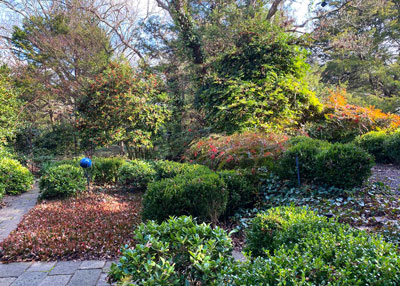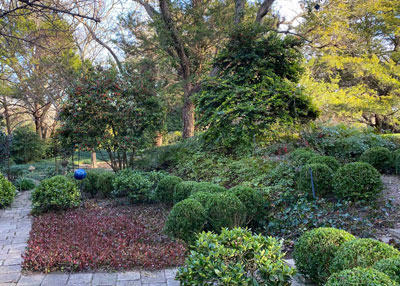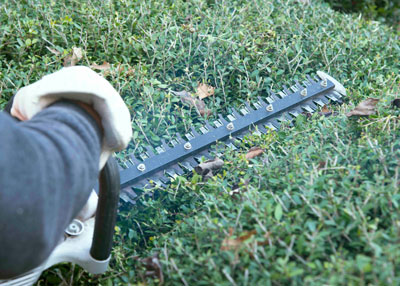Quick Tip from the Sperry Garden
If you hear my radio program or read what I write very often, you know I’m not a fan of formal pruning. At least, not if you’re trying to maintain a reasonably natural looking landscape.
But one time a year, just before the spurt of new growth begins in the spring, I give many of my low-growing shrubs a light trim. As much as anything, it’s just to even their growth up. Then I let them grow without additional trimming until the same time 12 months later.


On quick view, one might think that these photos were almost identical. However, let me point out some of the changes we made with the pruning equipment.
• Boxwoods. The sweeps of dark green boxwoods have been pruned with gasoline-powered hedge trimmers into smaller globes. Some people might opt to repeat that pruning time after time all season long. However, I’m going to allow the plants to grow out so that they will have a soft cushion of new twigs beginning in six or seven weeks.

• Compacta nandinas atop the retaining wall. You’ll notice that the plants that have the orange-red berries have been trimmed. However, nandinas get trimmed differently than any other type of shrubs. When we trim them, we do so by removing the tallest canes completely to the ground. In this case, we removed half or more of those canes. You can easily see the difference that it made in the appearance of the plants. New growth will fill back in very quickly this spring without the plants’ becoming gangly and tall.
• Crowded forsythia and mass of Asian jasmine and English ivy. If you look just above the nandinas and between the two large hollies, you will see an old forsythia and a climbing accumulation of Asian jasmine and English ivy. It had become quite unsightly and I decided it was time to get rid of it all. The forsythia no longer bloomed like it used to. So out with it all. Eliminating plants that no longer carry their weight in the landscape is one of the most difficult decisions we gardeners must make. But now that I can see the pecan’s trunk, I’m glad that I made it.
• At the time of the January photograph, we had already trimmed the purple wintercreeper euonymus groundcover. I like to keep it very short in this area. That requires just one or two trimmings per year, but it really pays off in the better-groomed look that it gives.
This area is a work in progress. We’re still going to address the large tree-form hollies with some light pruning and shaping, and I probably will do some light trimming on the Carissa hollies as well. There is an area here that doesn’t drain properly, so I will be doing some grade changing and replanting. But for now I’ll pause long enough to let it illustrate what I mean when I talk about late-winter shearing to maintain a nice, natural form.
